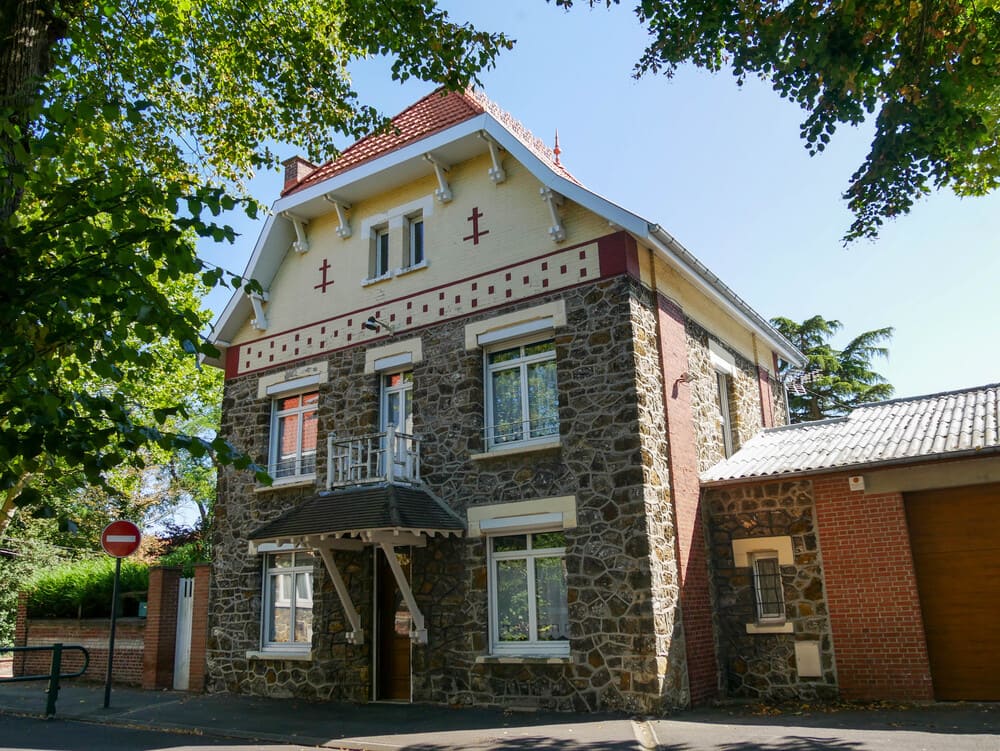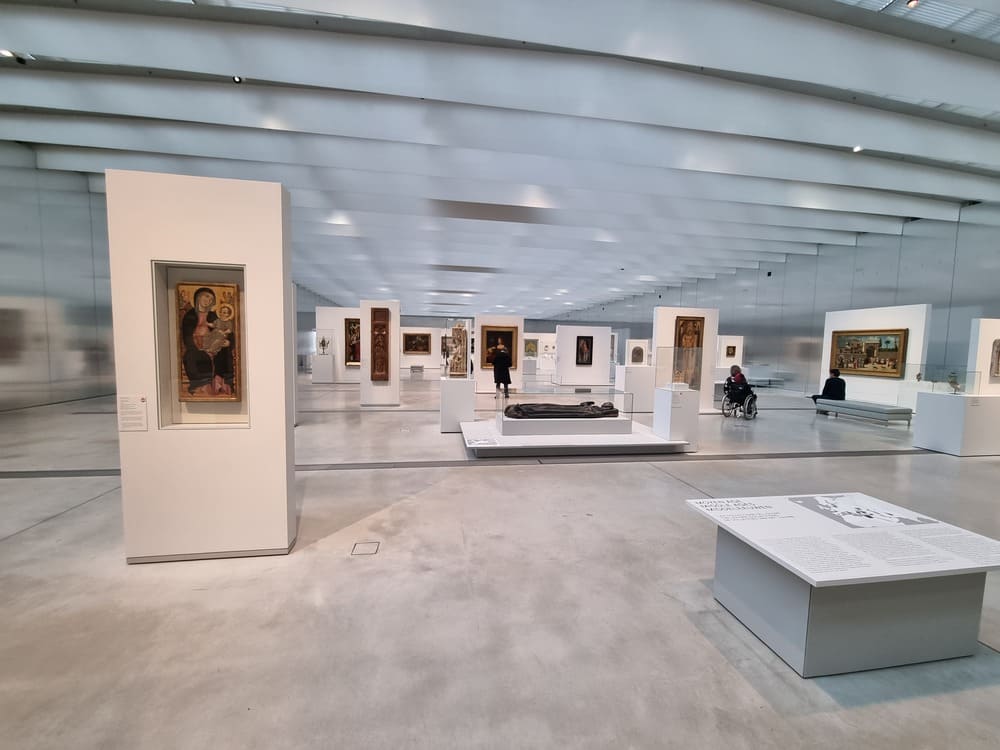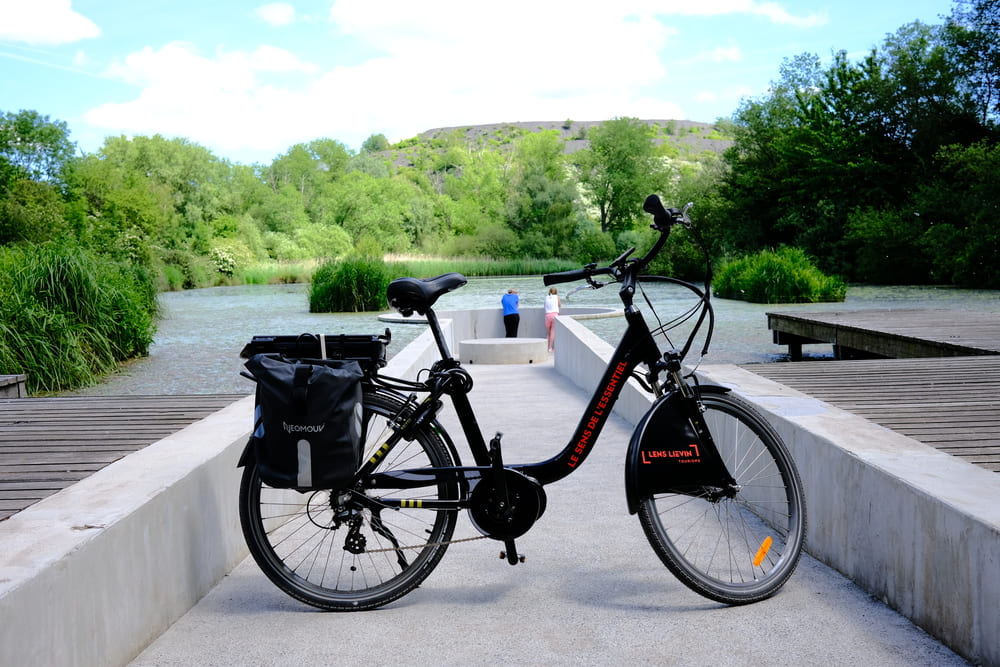Heritage, history and leisure around Louvre Lens
The landscape of Lens evokes the deep history that links the French and the British. It is at the top of the Artois hills from Vimy to Notre Dame de Lorette that our countries are joined in history, that of the First World War, when the men and women of the Commonwealth came to defend their freedoms, alongside the inhabitants of the Lens-Liévin region. Those same inhabitants who, through their labour, literally shaped the landscape around Lens. The spoil tips, the headframes, the mining towns and the red bricks today bear witness to a mining history so important as to be classified a World Heritage Site: the Unesco mining basin around Lens(H2). The Lens area is also home to another treasure: the Louvre-Lens. Part of the collection of the largest museum in Paris, the Louvre, is located in Lens.
So, if the Louvre-Lens is a true must visit attraction, what else will you discover during your visit to this fascinating area, so rich in history, gastronomy and culture?
Lens centre
Your first stop is the large and friendly tourist office in the centre of the town; where you will also find a large selection of local products and produce to tempt you. An e-bike makes the perfect partner to discover the area and its attractions, and they are available to rent – at competitive rates – from the tourist office. Free route maps are available, and there is a wealth of information to ensure a great visit.
So, let’s set off on a bike ride to discover this famous triptych: the treasures of the mining basin, the Louvre-Lens and the events of The Great War. Put on your helmet, get on your bike and let’s go for a gentle ride, the electric ‘cheat’ helping all the time!
Cycling around
Louvre-Lens
Art deco in the city centre
Leaving the Lens-Liévin tourist office don’t forget to admire the facades all around you: starting with the office itself, housed in a former art deco shop, its name still visible on the entrance’s floor. Look up and wave at the gorilla that stands proudly on the façade of the famous chocolate maker Jean Claude Jeanson. Head first to the railway station, where the interior mosaics tell the story of the miners and the collieries, an art-deco treasure in red, gold and brilliant white.
Lens Art Deco©Yannick Cadart-CD62
Engineer’s house – Lens © A.Chaput Pas-de-Calais Tourisme
The miners and football supporters
On your way to the Louvre-Lens, close by you’ll find the Bollaert Stadium home of Racing Club de Lens, the Ligue 1 football team, renowned for its fanatical fans, and its fierce derby match rivalry with Lille Olympique Sporting Club. Next stop: the Louvre-Lens, and to reach it you will pass through the miner’s housing estates, with their terraced houses, garden estates and engineers’ and colliery manager’s houses; everywhere colliery rank and status is marked. The houses are positioned around the facilities necessary for their daily lives, the schools and social establishments. Look up and notice the details of the facades, where a variety of bricks provide elegant and subtle decoration. Strangely unique and yet as familiar as British mining villages such as Consett, Blaenavon, and, of course, Coalville!
Human history at the Louvre
A few assisted pedal strokes away is the Louvre-Lens museum. In a purpose-built building, opened in 2012, itself a strikingly modern, aluminium-clad contrast to the rows of neat, terraced former miners’ houses that surround its grounds, a timeline-curated collection startles with treasure from pre-history to the 19th century. In the football-pitch sized Gallery of Time, more than 200 masterpieces from the Louvre’s collections are displayed carefully and spectacularly, taking you through 5000 years of creative excellence. At the entrance you will find a massive photographic installation, a recent acquisition that combines thousands of high-resolution photographs to create a multi-paneled visualization of Afghanistan’s Bamiyan Valley and its destroyed Buddha statues. At the end of your visit, you’ll find a huge painting of Napoleon, astride a horse; the emperor gazing balefully down on you.
Louvre-Lens-Timegallery © Andy Sutcliffe-Pas de calais Tourisme
Industrial scars
Slag heap-11-19 © Andy Sutcliffe-Pas de calais Tourisme
Riding e-bike-Lens Tourist Office © Andy Sutcliffe-Pas de calais Tourisme
Cycle route of the mining basin
Now, it’s time to push on to Loos en Gohelle for a last effort. We’re heading to the 11-19 base, now transformed into a place of art and cultural exchange. Here are the largest spoil heaps in Europe.
Set off on an amazing route along the towpath from Liévin. This green route offers surprises along the way. First stop at the Parc de la Glissoire, a former pithead now converted into a leisure centre. You can have a picnic there while enjoying the peace and quiet of the place and the silent fishermen …. Climb to the top of the slag heap and wind your way through the bushes; this is where the stars of the Racing Club de Lens train. From the summit, Vimy Ridge is clearly visible with the twin towers of the giant Canadian National Vimy Memorial reminding us of darker times. Then get back on your bike to discover a bucolic spot amidst the industrial scars. Take a break at the Briquette marshes, where a well-deserved rest on one of the benches will give you a chance to glimpse an amazing landscape. The last objective is Aquaterra and its park of islands. This vast green lung was designed for outdoor sports activities. Try out the sliding ring or follow the health trail, nature walks, petanque, rollerblading, etc. Enjoy the place before turning back, by bike. At the tourist office, after handing back your faithful e-bike, don’t forget to pick-up a Food Tour. This ‘planche’, or tasting board, is more than a simple Food Tour, the encounter is at the heart of the offer. You go to meet the local traders and they welcome you and advise you, giving visitors a tasty and entertaining insight into regional produce. Discover fine cheese at renowned fromagerie Philippe Olivier. In-house roasted coffee and chocolates await you at the Brûlerie du Cantin, where manager Laurent Baysse has just been awarded ‘best coffee roaster in France’! More treats await. But some things you will have to discover for yourselves.
Cycling around the memorial sites
This route for the sportier takes you to the important sites of the Western Front, from the Canadian memorial at Vimy to the Ring of Remembrance, and along the way you will pass the 14-18 Memorial and the largest national necropolis at Notre Dame de Lorette; a route guide is available.
The ideal way to follow this route is again e-bike, it is certainly hillier, but it is well worth the effort and you will discover new views of the slag heaps as you visit iconic locations from 1914-1918.
Canadian National Vimy Memorial © Benoît Diéval
The starting point is in Souchez, at the heart of your itinerary, and you can opt for several routes. Head east and climb up to Ablain Saint Nazaire, where you will find the Notre Dame de Lorette cemetery and its basilica, the largest French cemetery in the world. Here, in 2014, the Ring of Remembrance was inaugurated to commemorate the more than 600,000 soldiers, of all nationalities, who fell in the region during The Great War. A unique, humbling and solemn spot. This ring lists in alphabetical order the men and women who gave their lives on our northern French soil. At the bottom of the hill, don’t miss the 14-18 history centre which tells the story of the Great War in photos and videos. To the west, cycle a few kilometres to Vimy. This memorial, and the Ridge, is where you will feel history all around you; were, among other things, the reconstructed trenches, craters, and bunkers of the Battle of Arras bear witness to the events of a century ago that changed the world forever. Canadian students are on hand to retell the many small stories that come together to create the big story that shook France and Great Britain and the whole world.
During your journey, some sections are equipped with cycle paths, others are not. Be careful during your ride.
How to get to Lens?
By car: within easy distance of Calais.
By train: Eurostar to Lille and then a regional train from Lille to Lens which takes about 30 minutes.
More dynamic towns to visit
Arras
Béthune
Top ten city attractions
See, do, eat and more






